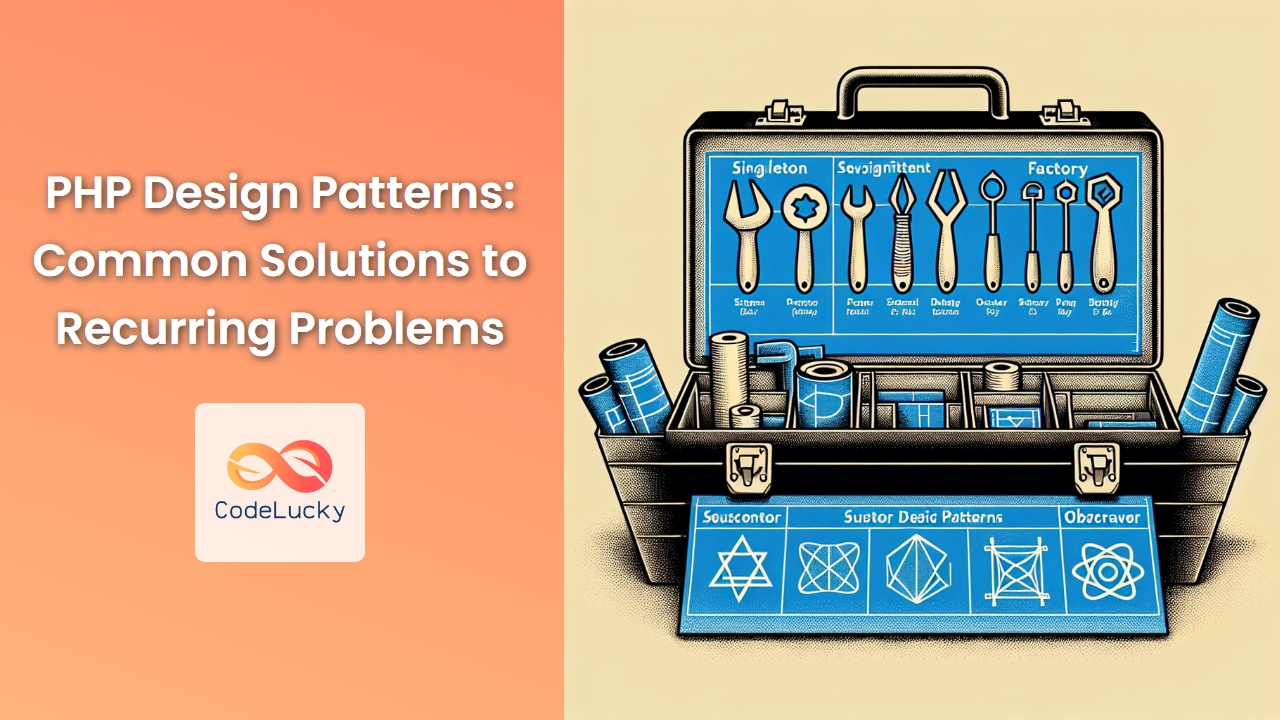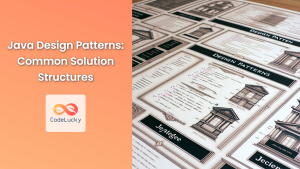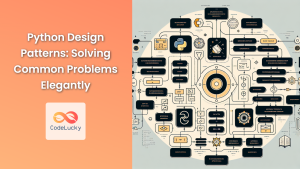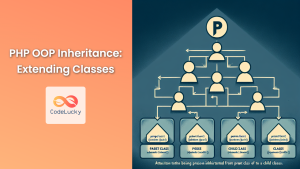In the world of software development, efficiency and maintainability are paramount. As projects grow in complexity, developers often encounter similar challenges across different applications. This is where design patterns come into play. Design patterns are tried-and-tested solutions to common problems in software design, providing a blueprint for solving issues in a way that’s both elegant and efficient.
For PHP developers, understanding and implementing design patterns can significantly improve code quality, reduce development time, and enhance the overall architecture of applications. Let’s dive deep into some of the most useful design patterns in PHP, exploring their concepts, benefits, and practical implementations.
1. Singleton Pattern
The Singleton pattern ensures that a class has only one instance and provides a global point of access to it. This pattern is particularly useful when exactly one object is needed to coordinate actions across the system.
When to Use:
- Managing a shared resource, like a database connection
- Controlling access to a resource
- When you need to limit the number of instances of a class to just one
Implementation:
class DatabaseConnection {
private static $instance = null;
private $connection;
private function __construct() {
// Private constructor to prevent direct instantiation
$this->connection = new PDO("mysql:host=localhost;dbname=mydb", "username", "password");
}
public static function getInstance() {
if (self::$instance == null) {
self::$instance = new DatabaseConnection();
}
return self::$instance;
}
public function getConnection() {
return $this->connection;
}
// Prevent cloning of the instance
private function __clone() {}
// Prevent unserializing of the instance
private function __wakeup() {}
}
// Usage
$db1 = DatabaseConnection::getInstance();
$db2 = DatabaseConnection::getInstance();
var_dump($db1 === $db2); // Output: bool(true)
In this example, no matter how many times we call getInstance(), we always get the same instance of DatabaseConnection. This ensures that we’re using a single database connection throughout our application, which can be more efficient and easier to manage.
🔑 Key Benefit: The Singleton pattern provides a global point of access and ensures only one instance exists, which can be crucial for managing shared resources.
2. Factory Method Pattern
The Factory Method pattern provides an interface for creating objects in a superclass, but allows subclasses to alter the type of objects that will be created.
When to Use:
- When a class can’t anticipate the class of objects it must create
- When a class wants its subclasses to specify the objects it creates
- When classes delegate responsibility to one of several helper subclasses, and you want to localize the knowledge of which helper subclass is the delegate
Implementation:
interface Logger {
public function log($message);
}
class FileLogger implements Logger {
public function log($message) {
echo "Logging to file: $message\n";
}
}
class DatabaseLogger implements Logger {
public function log($message) {
echo "Logging to database: $message\n";
}
}
class LoggerFactory {
public static function getLogger($type) {
switch ($type) {
case 'file':
return new FileLogger();
case 'database':
return new DatabaseLogger();
default:
throw new Exception("Invalid logger type");
}
}
}
// Usage
$fileLogger = LoggerFactory::getLogger('file');
$fileLogger->log("This is a log message");
$dbLogger = LoggerFactory::getLogger('database');
$dbLogger->log("This is another log message");
Output:
Logging to file: This is a log message
Logging to database: This is another log message
In this example, the LoggerFactory class is responsible for creating different types of loggers. The client code doesn’t need to know the specifics of how each logger is implemented; it just uses the factory to get the appropriate logger.
🏭 Key Benefit: The Factory Method pattern provides a way to delegate the instantiation logic to child classes, allowing for more flexible and extensible code.
3. Observer Pattern
The Observer pattern defines a one-to-many dependency between objects so that when one object changes state, all its dependents are notified and updated automatically.
When to Use:
- When an abstraction has two aspects, one dependent on the other
- When a change to one object requires changing others, and you don’t know how many objects need to be changed
- When an object should be able to notify other objects without making assumptions about who these objects are
Implementation:
interface Subject {
public function attach(Observer $observer);
public function detach(Observer $observer);
public function notify();
}
interface Observer {
public function update(Subject $subject);
}
class WeatherStation implements Subject {
private $observers = [];
private $temperature;
public function attach(Observer $observer) {
$this->observers[] = $observer;
}
public function detach(Observer $observer) {
$key = array_search($observer, $this->observers, true);
if ($key !== false) {
unset($this->observers[$key]);
}
}
public function notify() {
foreach ($this->observers as $observer) {
$observer->update($this);
}
}
public function setTemperature($temperature) {
$this->temperature = $temperature;
$this->notify();
}
public function getTemperature() {
return $this->temperature;
}
}
class TemperatureDisplay implements Observer {
public function update(Subject $subject) {
if ($subject instanceof WeatherStation) {
echo "Temperature Display: " . $subject->getTemperature() . "°C\n";
}
}
}
class TemperatureLogger implements Observer {
public function update(Subject $subject) {
if ($subject instanceof WeatherStation) {
echo "Temperature Logger: Logged temperature " . $subject->getTemperature() . "°C\n";
}
}
}
// Usage
$weatherStation = new WeatherStation();
$display = new TemperatureDisplay();
$logger = new TemperatureLogger();
$weatherStation->attach($display);
$weatherStation->attach($logger);
$weatherStation->setTemperature(25);
$weatherStation->setTemperature(26);
Output:
Temperature Display: 25°C
Temperature Logger: Logged temperature 25°C
Temperature Display: 26°C
Temperature Logger: Logged temperature 26°C
In this example, the WeatherStation is the subject, and TemperatureDisplay and TemperatureLogger are observers. When the temperature changes, all registered observers are automatically notified and updated.
👀 Key Benefit: The Observer pattern allows for a loose coupling between objects, making it easier to extend and maintain the codebase.
4. Strategy Pattern
The Strategy pattern defines a family of algorithms, encapsulates each one, and makes them interchangeable. It lets the algorithm vary independently from clients that use it.
When to Use:
- When you want to define a class that will have one behavior that is similar to other behaviors in a list
- When you need to use one of several behaviors dynamically
- When you have a conditional statement that chooses from several algorithms
Implementation:
interface PaymentStrategy {
public function pay($amount);
}
class CreditCardPayment implements PaymentStrategy {
private $name;
private $cardNumber;
public function __construct($name, $cardNumber) {
$this->name = $name;
$this->cardNumber = $cardNumber;
}
public function pay($amount) {
echo "Paid $amount using Credit Card (Name: $this->name, Card Number: $this->cardNumber)\n";
}
}
class PayPalPayment implements PaymentStrategy {
private $email;
public function __construct($email) {
$this->email = $email;
}
public function pay($amount) {
echo "Paid $amount using PayPal (Email: $this->email)\n";
}
}
class ShoppingCart {
private $paymentStrategy;
public function setPaymentStrategy(PaymentStrategy $paymentStrategy) {
$this->paymentStrategy = $paymentStrategy;
}
public function checkout($amount) {
$this->paymentStrategy->pay($amount);
}
}
// Usage
$cart = new ShoppingCart();
$cart->setPaymentStrategy(new CreditCardPayment("John Doe", "1234-5678-9012-3456"));
$cart->checkout(100);
$cart->setPaymentStrategy(new PayPalPayment("[email protected]"));
$cart->checkout(50);
Output:
Paid 100 using Credit Card (Name: John Doe, Card Number: 1234-5678-9012-3456)
Paid 50 using PayPal (Email: john@example.com)
In this example, we have different payment strategies (Credit Card and PayPal) that can be used interchangeably in the ShoppingCart class. The client can easily switch between different payment methods without changing the ShoppingCart code.
🔄 Key Benefit: The Strategy pattern allows for easy swapping of algorithms or behaviors at runtime, promoting flexibility and reusability.
5. Decorator Pattern
The Decorator pattern allows behavior to be added to an individual object, either statically or dynamically, without affecting the behavior of other objects from the same class.
When to Use:
- To add responsibilities to objects dynamically and transparently, that is, without affecting other objects
- For responsibilities that can be withdrawn
- When extension by subclassing is impractical
Implementation:
interface Coffee {
public function getCost();
public function getDescription();
}
class SimpleCoffee implements Coffee {
public function getCost() {
return 10;
}
public function getDescription() {
return "Simple Coffee";
}
}
abstract class CoffeeDecorator implements Coffee {
protected $decoratedCoffee;
public function __construct(Coffee $coffee) {
$this->decoratedCoffee = $coffee;
}
public function getCost() {
return $this->decoratedCoffee->getCost();
}
public function getDescription() {
return $this->decoratedCoffee->getDescription();
}
}
class Milk extends CoffeeDecorator {
public function getCost() {
return $this->decoratedCoffee->getCost() + 2;
}
public function getDescription() {
return $this->decoratedCoffee->getDescription() . ", Milk";
}
}
class Sugar extends CoffeeDecorator {
public function getCost() {
return $this->decoratedCoffee->getCost() + 1;
}
public function getDescription() {
return $this->decoratedCoffee->getDescription() . ", Sugar";
}
}
// Usage
$simpleCoffee = new SimpleCoffee();
echo $simpleCoffee->getDescription() . " costs $" . $simpleCoffee->getCost() . "\n";
$milkCoffee = new Milk($simpleCoffee);
echo $milkCoffee->getDescription() . " costs $" . $milkCoffee->getCost() . "\n";
$sweetMilkCoffee = new Sugar($milkCoffee);
echo $sweetMilkCoffee->getDescription() . " costs $" . $sweetMilkCoffee->getCost() . "\n";
Output:
Simple Coffee costs $10
Simple Coffee, Milk costs $12
Simple Coffee, Milk, Sugar costs $13
In this example, we start with a simple coffee and then dynamically add milk and sugar to it. Each decorator adds its own behavior (cost and description) while maintaining the same interface as the original coffee object.
🎭 Key Benefit: The Decorator pattern provides a flexible alternative to subclassing for extending functionality, allowing for a more dynamic and composable approach.
Conclusion
Design patterns are powerful tools in a developer’s arsenal, offering proven solutions to common software design problems. By understanding and applying these patterns, PHP developers can create more maintainable, flexible, and robust applications.
Remember, while design patterns are incredibly useful, they should not be forced into every situation. Always consider the specific needs of your project and use patterns where they provide clear benefits.
As you continue your journey in PHP development, practice implementing these patterns in your projects. Over time, you’ll develop an intuition for when and how to apply them effectively, leading to cleaner, more efficient code.
🚀 Keep coding, keep learning, and happy PHP development!



















